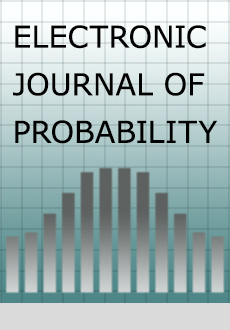Abstract
Let $X$ be a linear diffusion and $f$ a non-negative, Borel measurable function. We are interested in finding conditions on $X$ and $f$ which imply that the perpetual integral functional $$ I^X_\infty(f):=\int_0^\infty f(X_t) dt $$ is identical in law with the first hitting time of a point for some other diffusion. This phenomenon may often be explained using random time change. Because of some potential applications in mathematical finance, we are considering mainly the case when $X$ is a Brownian motion with drift $\mu>0,$ denoted ${B^{(\mu)}_t: t\geq 0},$ but it is obvious that the method presented is more general. We also review the known examples and give new ones. In particular, results concerning one-sided functionals $$ \int_0^\infty f(B^{(\mu)}_t){\bf 1}_{{B^{(\mu)}_t<0}} dt \quad {\rm and} \quad \int_0^\infty f(B^{(\mu)}_t){\bf 1}_{{B^{(\mu)}_t>0}} dt $$ are presented. This approach generalizes the proof, based on the random time change techniques, of the fact that the Dufresne functional (this corresponds to $f(x)=\exp(-2x)),$ playing quite an important role in the study of geometric Brownian motion, is identical in law with the first hitting time for a Bessel process. Another functional arising naturally in this context is $$ \int_0^\infty \big(a+\exp(B^{(\mu)}_t)\big)^{-2} dt, $$ which is seen, in the case $\mu=1/2,$ to be identical in law with the first hitting time for a Brownian motion with drift $\mu=a/2.$ The paper is concluded by discussing how the Feynman-Kac formula can be used to find the distribution of a perpetual integral functional.
Citation
Paavo Salminen. Marc Yor. "Perpetual Integral Functionals as Hitting and Occupation Times." Electron. J. Probab. 10 371 - 419, 2005. https://doi.org/10.1214/EJP.v10-256
Information





